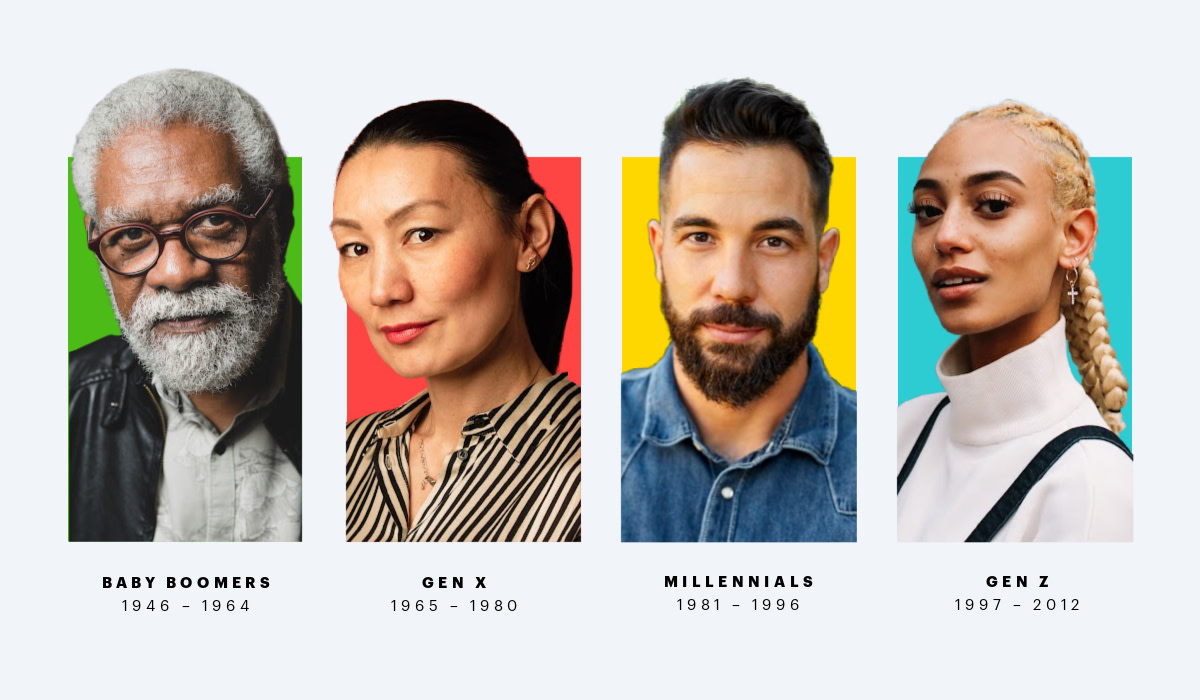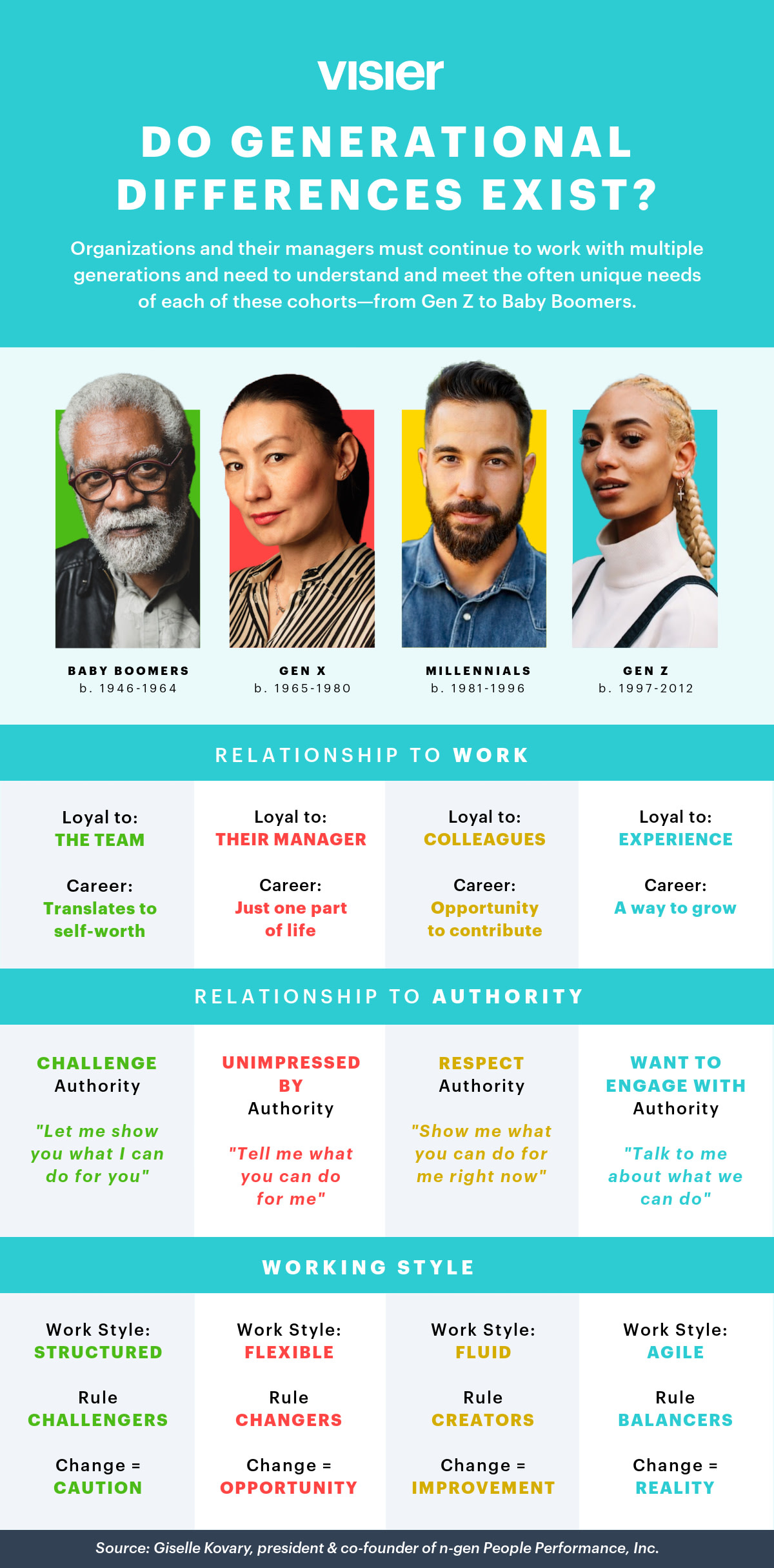Have Generational Work Styles Changed Since the Pandemic?
Generational differences in the workplace exist, but the actual makeup of today's workplace is far more nuanced. This blog explains.

Forget everything you thought you knew about generational differences in the workplace. What may have been true prior to the pandemic is likely not true anymore. Sentiments have shifted among employees of all ages, and within all levels of the organizations they work for, because of the extreme disruption in their personal and work lives since early 2020.
There have been some significant shifts in generations in the workplace—not only in terms of numbers, but in terms of perspectives and motivations. That represents some new challenges for leaders that some may feel unprepared for.
Deloitte reports that “70% of organizations say leading multigenerational workforces is important or very important to their short-term success, but only 10% say they are very ready to address this trend.”
How workplace generational demographics are shifting—or not
The Bureau of Labor Statistics (BLS) has released data comparing employment changes by sex and age from the 2nd quarter of 2019 to the 2nd quarter of 2021, indicating that while there was a significant decline in employment of men and women between 16 and 24 in 2020—about one quarter of them!—things have stabilized since then. They report: “By 2021, youth recovered more than 80 percent of the employment they lost, while older age groups recovered substantially less.”
The pandemic also pushed some boomers—who have been notoriously slow to leave the workforce as predicted based on their age—to finally decide it was time to retire. As The Washington Post reports: “The share of Americans over age 55 who were working fell sharply when the pandemic began, plummeting six percentage points to 33.3 percent in March and April of 2020, according to BLS data. And although those numbers have started to recover, it remains unclear how many of those older workers will pursue new employment or eventually declare, ‘Retired!’”
Impact of the “Great Resignation”
The “Great Resignation” is also having an impact on who is, or isn’t, in the workforce. Some companies are reaching out to retirees—their own as well as retirees from other companies—to help stem the tide of lost talent. In fact, Kiplinger suggests that “the cure” for the Great Resignation may lie in hiring older workers.
Retirees themselves are increasingly interested in returning to work, according to AARP: “The historically tight labor market with the opportunities it holds is one reason some retirees may want to go back to work now. Others may find that either retired life isn’t how they pictured it, or they may need to work for financial reasons.”
The end result: Organizations and their managers continue to work with multiple generations. They need to understand and meet the unique needs of each of these cohorts—from Gen Z, the newest entrants, to some still-entrenched members of older generations.
Generational differences in the workplace
In a September 2021 article for SHRM, Allen Smith, J.D., covers some “mindset differences” between the generations shared by Giselle Kovary, president and co-founder of n-gen People Performance Inc. and a managing partner of Global Training Transformation in Toronto. These differences, she suggests, impact the way employees view their workplace relationships and where they place their loyalty.
Baby boomers tend to be loyal to the team.
Generation X tends to be loyal to their managers.
Millennials tend to be loyal to their colleagues.
Generation Z tends to be loyal to their work experiences.
Despite these and other accepted “truisms” about the various generations, Martha Bird, a chief business anthropologist with ADP cautions against “generational caricature.” This stereotyping, she says, “tends to block the deeper, more nuanced understandings of meaningful differences and similarities.”
Those differences have become even more granular during the pandemic as employees have faced a wide range of different work and home life impacts that color their perspectives and impact their productivity. The bottom line, says Bird: “Multiple generations working together provides diverse perspectives, complementary experiences, and an enhanced company culture.”

Using data to determine optimum approaches to varied employee groups
While business experts and researchers often point to commonly shared traits among generations, the truth is that the demographic makeup of organizations will vary by geography, industry, type of company, and company culture.
Some industries such as healthcare, for instance, tend to have an older workforce. Others like technology are considered to have younger workforces.
Employee sentiment—especially after the pandemic experience—will vary based on a wide range of impacts beyond their age. Some have struggled with financial difficulties. Some have had to balance their time and attention between work and home schooling children. Some have had health concerns of their own or of family members.
Generational differences: generalities
So, while people can draw generalities around generational differences in the workplace, draw these from the perspective of providing a benchmark or point of comparison that companies can make based on their own employee data.
Organizations that leverage their data on employees, including productivity data, sentiment data, turnover data, and more, have an opportunity to be focused on differences that extend beyond age or generation.
Visier’s recently released report What Gen Z Workers Really Want can be a good starting point for helping to understand the youngest workplace demographic—Generation Z. You may be surprised by our findings and, perhaps, prompted to compare these findings to your own data about the most recent entrants to your workforce.



